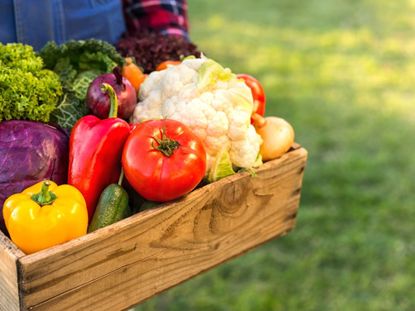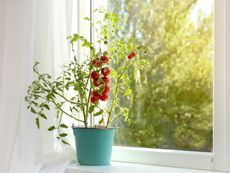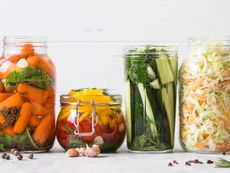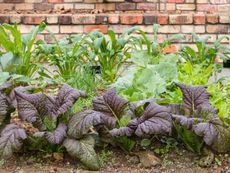The Southern Fall Vegetable Garden


In the South and other warm climates, summer can be murder on a vegetable garden. The overwhelming heat slows or even kills the growth of plants that were doing just fine during the late spring. However, while Southern gardeners must contend with the heat, they also get the pleasure of being able to grow a fall vegetable garden.
What is a Fall Vegetable Garden?
Basically, a fall vegetable garden is one where you can plant a whole new crop of harvestable crops. In the South in the fall, the weather returns to a manageable level and the onset of any kind of winter is still many months off. Plenty of time to grow plenty of things. Fall gardens make an ideal way for a Southern gardener to take advantage of their climate.
What to Grow in the Southern Fall Garden
In most Southern climates, you can choose to grow a wide variety of fall garden crops. Certainly, any of the following are possible:
As well as:
If you are far enough South, even melons and hard squash are a possibility when planting a fall garden.
Fall Garden Planting Schedule
The fall garden planting schedule depends largely on the first frost date for the zone you live in. If you live in the more Northern parts of the South, you'll want to think about planting a fall garden in early to mid-August. In the warmer parts of the South, you may be able to wait until September to plant fall garden crops. The best way to determine your fall garden planting schedule is to look at how long it takes for the crops you wish to grow to mature and count backwards from you area's first frost date, plus a few weeks to allow for harvest. Your first frost date can be obtained by calling your local extension service or a local reputable nursery.
Things to Remember with Fall Gardens
Fall gardens take advantage of the warmer weather, but there are a few things that you need to remember. The fall garden planting schedule means that you will be growing your garden during what is traditionally the driest part of the year. Cooler weather may give you the illusion that your fall garden crops will need less water. This is not the case. Keep a close eye on the amount of rainfall your fall vegetable garden gets each week. If it is not getting at least 2 to 3 inches (5-8 cm.) each week, you'll need to make up the difference through watering. Also keep in mind that even though you are planting a fall garden according to the first frost date, the first frost date is only a guideline. You may experience an earlier than normal frost, so be prepared to cover and protect your fall vegetable garden in the event of light frost. If you live in the South, it's nice to know that Mother Nature makes up for sweltering summer heat by giving you the chance to enjoy a fall vegetable garden.
Gardening tips, videos, info and more delivered right to your inbox!
Sign up for the Gardening Know How newsletter today and receive a free download of our most popular eBook "How to Grow Delicious Tomatoes."

Heather Rhoades founded Gardening Know How in 2007. She holds degrees from Cleveland State University and Northern Kentucky University. She is an avid gardener with a passion for community, and is a recipient of the Master Gardeners of Ohio Lifetime Achievement Award.
-
 Clever Vertical Vegetable Garden Ideas For Small Spaces – 7 Ways To Save Space
Clever Vertical Vegetable Garden Ideas For Small Spaces – 7 Ways To Save SpaceShort on garden space? Learn some vegetable garden ideas for small spaces that are fun and easy.
By Mary Ellen Ellis
-
 26 Different Types Of Orchids – With Pictures & Information
26 Different Types Of Orchids – With Pictures & InformationDiscover stunning orchid types to grow in your home and garden – from easy beginner varieties to rare and exotic species that are the preserve of experts.
By Melanie Griffiths
-
 How Many Vegetables To Plant Per Person For A Year
How Many Vegetables To Plant Per Person For A YearGauging how much to plant in a vegetable garden can eliminate waste while still producing enough for your family. Click for more.
By Bonnie L. Grant
-
 13 Perennial Fruits And Vegetables You Only Have To Plant Once
13 Perennial Fruits And Vegetables You Only Have To Plant OnceLooking to set it and forget it? Find out which fruits and vegetables can be grown as perennials.
By Laura Miller
-
 11 Edible Plants For A Year-Round Garden In A Bucket
11 Edible Plants For A Year-Round Garden In A BucketWant to know how to grow food inside your house and which foods do best indoors? Click here to learn all about it.
By Bonnie L. Grant
-
 Frost Tolerance Of Vegetables From Least To Most Hardy
Frost Tolerance Of Vegetables From Least To Most HardyHow cold can vegetables tolerate? Knowing which veggies will survive frosts and freezes is essential for the success of your garden. Click here for more.
By Laura Miller
-
 Best Vegetables To Pickle Straight From The Garden
Best Vegetables To Pickle Straight From The GardenPickles aren’t limited to just cucumbers. Read on for tips on pickling your fresh veggies.
By Amy Grant
-
 Benefits Of Planting In Fall Vs. Spring Vegetable Plots
Benefits Of Planting In Fall Vs. Spring Vegetable PlotsLearn why some vegetables do better if you plant them in fall instead of spring.
By Laura Miller
-
 Interplanting Vegetables In The Fall Garden
Interplanting Vegetables In The Fall GardenLearn all about the benefits of interplanting vegetables for your fall garden.
By Laura Miller
-
 Best Vegetables For Growing In Perlite
Best Vegetables For Growing In PerlitePerlite is a natural growing medium that comes from super-heated volcanic glass. In some cases, it works better than soil. Read on for more info.
By Laura Miller